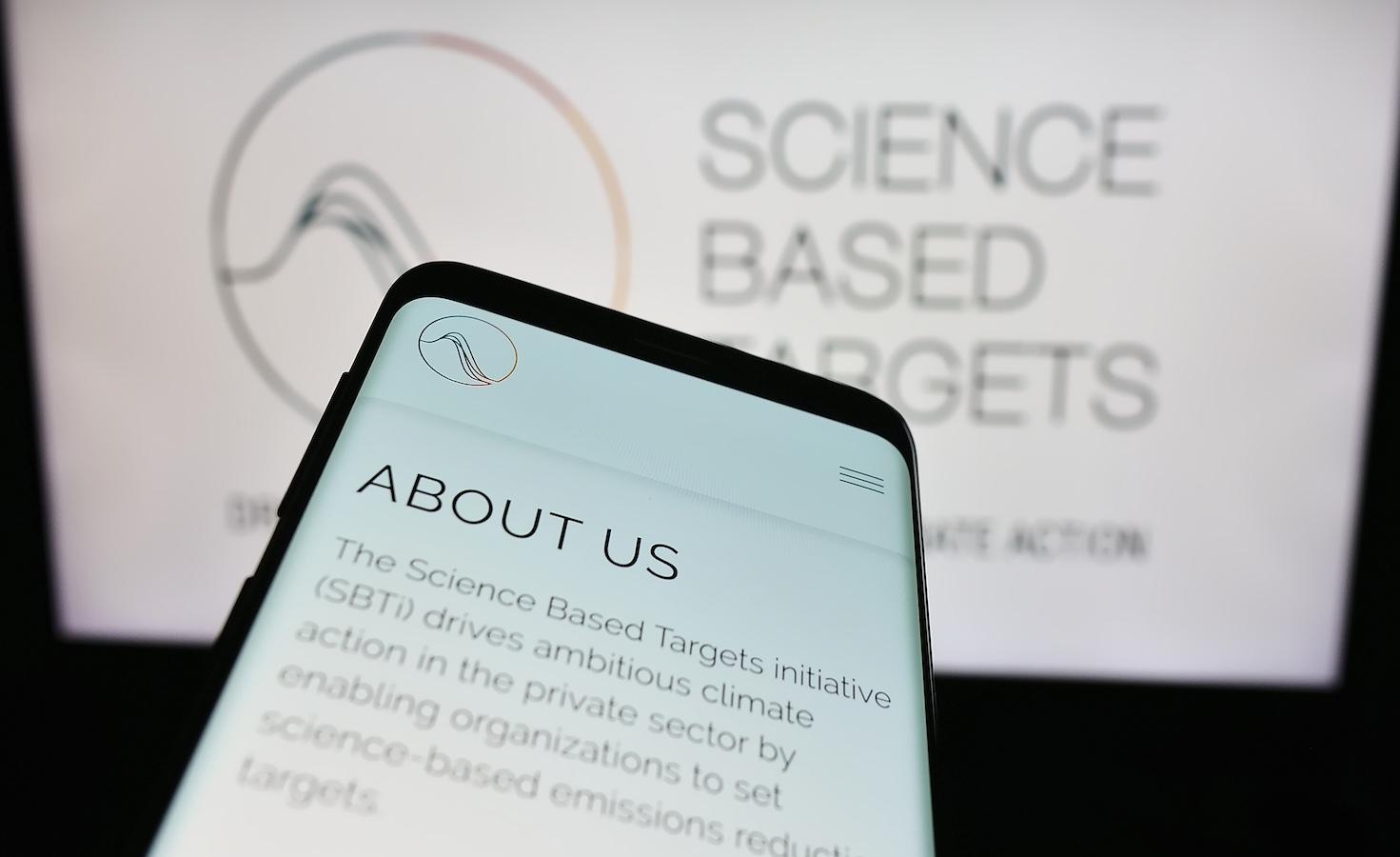CSRD Guide for Consumer Brands
CSRD is set to revolutionize sustainability reporting. This in-depth guide will help you prepare for compliance.
.png)
The Corporate Sustainability Reporting Directive (CSRD) is set to revolutionize sustainability reporting for thousands of companies worldwide. If you're in the food & beverage, CPG, apparel, textiles and footwear industries, this in-depth guide will help you navigate the complexities of CSRD and prepare for compliance.
Understanding CSRD: A Game-Changer in Sustainability Reporting
The CSRD, adopted by the European Union Council on November 28, 2022, and entering into force on January 5, 2023, is a critical component of the EU's ambitious Sustainable Finance Package. This directive significantly expands the scope and depth of sustainability reporting requirements, replacing the previous Non-Financial Reporting Directive (NFRD).
Key aspects that set CSRD apart include:
- Broader coverage: The directive extends to a much larger number of companies, including non-EU firms with significant EU operations.
- Double materiality principle: Companies must report on both how sustainability issues affect their business and how their activities impact people and the environment.
- Mandatory third-party assurance: This ensures the reliability and comparability of reported information.
- Digital tagging: Enhances the accessibility and analysis of reported data.
- Alignment with other EU initiatives: CSRD reporting aligns with the Sustainable Finance Disclosure Regulation (SFDR) and the EU Taxonomy.
Who Falls Under CSRD's Scope?
The CSRD casts a wide net, significantly expanding the number of companies required to report on their sustainability performance. It's estimated that around 50,000 companies across the EU will be subject to these new reporting standards, accounting for 75% of all EU companies' turnover. Here's a breakdown of who needs to comply:
- Large EU companies meeting at least two of these criteria
- 250+ employees
- €40 million+ annual net turnover
- €20 million+ total assets
- All EU-listed companies, except for listed micro-enterprises
- Non-EU companies with significant EU operations
- €150 million+ annual EU revenue
- At least one EU subsidiary or branch meeting specific criteria
- SMEs: The EU defines SMEs as companies that meet at least two of the following criteria:
- Annual turnover not exceeding €50 million
- Fewer than 250 employees
- Balance sheet total not exceeding €43 million
- Listed SMEs are required to report under CSRD, with some exceptions and simplifications
- Non-listed SMEs are not directly subject to CSRD but may face indirect impacts
For consumer companies, it's crucial to assess whether you fall under these categories. Even if you're not directly subject to CSRD, you may be indirectly affected if you're part of the value chain of companies that are required to report.
CSRD Timeline: Key Dates for Compliance
The implementation of CSRD follows a phased approach, giving companies of different sizes time to prepare:
- January 5, 2023: CSRD entered into force
- January 1, 2024: Large companies currently reporting under NFRD begin collecting data
- January 1, 2025: First CSRD reports due for FY 2024 (large companies already subject to NFRD)
- January 1, 2026: Other large companies not previously subject to NFRD report for FY 2025
- January 1, 2027: Listed SMEs (except micro-enterprises) report for FY 2026
- January 1, 2029: Non-EU companies with significant EU operations report for FY 2028
For SMEs, there's an important opt-out option:
- Listed SMEs have the option to delay reporting until 2028, giving them more time to prepare.
Detailed Disclosures Under CSRD: What You Need to Report
The CSRD mandates comprehensive sustainability reporting across various environmental, social, and governance (ESG) topics. While the directive covers a broad spectrum including social responsibility, human rights, anti-corruption measures, and board diversity, a significant focus is placed on environmental reporting, particularly carbon emissions. Let's delve into the carbon reporting requirements, which are especially relevant for companies in the food and beverage industry:
Carbon Measurement and Reporting Requirements
Under CSRD, companies are required to provide detailed information about their greenhouse gas (GHG) emissions, climate-related targets, and strategies. Here's what you need to know:
- GHG Emissions Reporting
- Scope 1 emissions: Direct emissions from owned or controlled sources
- Scope 2 emissions: Indirect emissions from the generation of purchased energy
- Scope 3 emissions: All other indirect emissions that occur in a company's value chain
- Emissions from agricultural practices in the supply chain
- Emissions from processing and manufacturing
- Transportation and distribution emissions
- Emissions from packaging and end-of-life treatment of sold products
- Emissions Reduction Targets
- Short-term, medium-term, and long-term GHG reduction targets
- Alignment of these targets with the Paris Agreement goals (limiting global warming to well below 2°C, preferably 1.5°C)
- Detailed plans on how these targets will be achieved
- Climate Risk Assessment
- Identification and assessment of climate-related risks and opportunities
- How these risks and opportunities are integrated into overall risk management
- Potential financial impacts of climate risks and opportunities
- Energy Management
- Total energy consumption and energy intensity
- Proportion of energy from renewable sources
- Targets for increasing renewable energy use and energy efficiency
- Carbon Mitigation Strategies
- Detailed plans for reducing emissions across the value chain
- Investments in low-carbon technologies or processes
- Supplier engagement programs for reducing upstream emissions
- Carbon Removal and Offsetting
- If used, details of carbon removal or offsetting projects
- Proportion of emissions offset vs. directly reduced
- Quality and verification standards of offset projects
- Product Carbon Footprint
- Carbon footprint of key products or product categories
- Efforts to reduce the carbon intensity of products
For food and beverage companies, additional considerations may include:
- Carbon sequestration efforts in agricultural soils
- Emissions from food waste and efforts to reduce these
- Transition to low-carbon or plant-based product lines
While carbon reporting is a critical component of CSRD, it's important to note that the directive also requires reporting on other environmental aspects such as water use, biodiversity impact, and circular economy initiatives. Additionally, companies must disclose information on social and governance matters, including:
- Social responsibility and treatment of employees
- Respect for human rights throughout the value chain
- Anti-corruption and bribery measures
- Diversity on company boards
The specific reporting requirements may vary based on company size and sector. SMEs, while subject to simplified reporting standards, should still strive to provide as comprehensive a picture as possible of their carbon footprint and reduction efforts, as this data may be crucial for larger companies in their supply chain to fulfill their own CSRD obligations.
By focusing on robust carbon reporting, companies can not only ensure CSRD compliance but also identify opportunities for emissions reduction, enhance their climate resilience, and position themselves competitively in an increasingly carbon-conscious market.
The Double Materiality Principle: A Key CSRD Concept
One of the most significant aspects of CSRD is the introduction of the double materiality principle. This concept requires companies to consider and report on two dimensions of materiality:
- Financial materiality: How sustainability issues may impact the company's financial performance and value creation.
- Impact materiality: How the company's activities impact people and the environment.
This dual approach ensures a comprehensive view of a company's sustainability performance and its broader impacts on society and the environment. For consumer companies, this might involve assessing both the financial risks posed by climate change to your supply chain and the environmental impact of your production processes or product lifecycle.
How to Prepare for CSRD Compliance: A Step-by-Step Guide
Preparing for CSRD compliance is a significant undertaking that requires a strategic approach. Here's a detailed guide to help you navigate the process:
- Assess applicability and scope
- Determine if your company falls under CSRD scope
- Identify which reporting year applies to your organization
- Map out which entities within your corporate structure need to report
- Conduct a comprehensive gap analysis
- Review current sustainability reporting practices
- Identify gaps between existing reports and CSRD requirements
- Assess your data collection capabilities for all required disclosures
- Establish a robust governance structure
- Assign clear roles and responsibilities for CSRD compliance
- Ensure board oversight of sustainability matters
- Create cross-functional teams to manage different aspects of reporting
- Implement effective data collection systems
- Set up processes to gather required ESG data across your organization
- Consider investing in sustainability management software for efficient data handling
- Ensure data collection covers your entire value chain, including suppliers and customers
- Conduct a thorough materiality assessment
- Identify material sustainability topics for your company using the double materiality principle
- Engage with stakeholders to understand their priorities and concerns
- Regularly review and update your materiality assessment
- Develop a comprehensive reporting framework
- Align your reporting with European Sustainability Reporting Standards (ESRS)
- Integrate sustainability information into management reports
- Develop processes for collecting qualitative information and narratives
- Ensure data quality and prepare for assurance
- Implement robust internal controls for data accuracy
- Develop an audit trail for all reported information
- Prepare for mandatory third-party assurance by understanding assurance requirements
- Train staff and build internal capacity
- Educate relevant employees on CSRD requirements and their role in compliance
- Provide training on new data collection and reporting processes
- Build sustainability expertise within your organization
- Engage stakeholders throughout the process
- Communicate your CSRD compliance efforts to investors, customers, and other stakeholders
- Gather feedback to continually improve your reporting quality and relevance
- Use CSRD reporting as an opportunity to enhance stakeholder relationships
- Continuously review and improve your approach
- Regularly assess the effectiveness of your CSRD reporting process
- Stay updated on any changes or additions to CSRD requirements
- Benchmark your reporting against industry peers and best practices
CSRD vs. Other Reporting Frameworks: Understanding the Landscape
While CSRD is comprehensive, it doesn't exist in isolation. It aligns with and builds upon other global sustainability reporting standards. Understanding these relationships can help you streamline your reporting efforts:
- TCFD (Task Force on Climate-related Financial Disclosures): CSRD incorporates TCFD recommendations, particularly for climate-related disclosures. If you're already reporting in line with TCFD, you'll have a head start on some CSRD requirements.
- GRI (Global Reporting Initiative): CSRD aligns with many GRI Standards but has more specific requirements for EU companies. Your existing GRI reporting can serve as a good foundation for CSRD compliance.
- ISSB (International Sustainability Standards Board): CSRD goes beyond ISSB by requiring disclosure of companies' impacts on sustainability matters, not just financial materiality. However, the frameworks are designed to be interoperable.
- SASB (Sustainability Accounting Standards Board): While not directly referenced in CSRD, SASB standards can provide industry-specific metrics that complement CSRD reporting.
By understanding these relationships, you can leverage your existing reporting practices and gradually build towards full CSRD compliance.
Potential Sanctions for Non-Compliance: Understanding the Risks
The CSRD introduces potential sanctions for non-compliance, though the specifics can vary by EU Member State. Here are some examples:
- In Germany, businesses may face fines up to €10 million, 5% of total annual turnover, or twice the amount of profits gained or losses avoided due to non-compliance.
- In France, while there are currently no direct fines for non-reporting, companies may face financial penalties if they fail to disclose non-financial information when requested by an interested party.
Beyond financial penalties, non-compliance can lead to reputational damage, loss of investor confidence, and potential exclusion from certain markets or contracts. It's crucial to take CSRD compliance seriously and start preparing early to mitigate these risks.
The Benefits of CSRD Compliance: Beyond Regulatory Requirements
While CSRD compliance may seem challenging, it offers significant benefits for companies:
- Enhanced transparency and stakeholder trust: Comprehensive reporting builds credibility with investors, customers, and other stakeholders.
- Improved risk management: The process of preparing CSRD reports can help identify and mitigate sustainability-related risks.
- Competitive advantage: Strong sustainability performance and reporting can differentiate your company in the market.
- Access to sustainable finance: Robust ESG reporting can improve access to green financing and sustainability-linked loans.
- Operational efficiencies: The data collection and analysis required for CSRD can reveal opportunities for efficiency improvements and cost savings.
- Strategic alignment: CSRD reporting encourages the integration of sustainability into core business strategy and operations.
By viewing CSRD as an opportunity rather than just a compliance exercise, companies can derive significant value from the process.
How Planet FWD Can Help You Prepare for CSRD
At Planet FWD, we understand the complexities of sustainability reporting and the challenges posed by regulations like CSRD. Our platform is specifically designed to help consumer companies measure their carbon emissions and identify opportunities for reduction. We can streamline your data collection process, help you conduct materiality assessments, and generate reports that align with CSRD requirements.
Our team of experts stays up-to-date with the latest regulatory developments and can provide guidance on how to integrate CSRD reporting into your existing sustainability strategy. We can help you navigate the double materiality principle, ensure your reporting meets the necessary standards, and prepare for third-party assurance.
Don't let CSRD compliance overwhelm you. Let Planet FWD be your partner in turning this regulatory challenge into an opportunity for growth and positive impact.
Next Steps: Embracing CSRD as a Catalyst for Sustainable Business
Ready to take the next step in your CSRD compliance journey? Contact us to book a free regulatory consultation with Planet FWD today. Our experts will provide personalized guidance on how our software solution can help you meet CSRD requirements efficiently and effectively.
Book a Regulatory Consultation
Still hungry for more? Download our comprehensive Regulatory Guide to learn more about CSRD and other key sustainability regulations impacting consumer companies. Stay ahead of reporting requirements and turn compliance into a competitive advantage.
Download Regulatory Guide
Head of marketing
Lorem ipsum dolor sit amet, consectetur adipiscing elit. Consectetur, adipiscing elit, sed do eiusmod tempor incididunt ut lab. Lorem ipsum dolor sit amet, consectetur adipiscing elit. Lorem ipsum dolor sit amet, consectetur adipiscing elit.
This is an example blog post style
Lorem ipsum dolor sit amet, consectetur adipiscing elit, sed do eiusmod tempor incididunt ut labore et dolore magna aliqua. Sed vulputate odio ut enim. Volutpat sed cras ornare arcu dui. Lorem dolor sed viverra ipsum. Luctus accumsan tortor posuere ac ut consequat semper. Viverra justo nec ultrices dui sapien eget mi proin. Mollis nunc sed id semper risus in hendrerit gravida rutrum. Lacinia quis vel eros donec. Nisi vitae suscipit tellus mauris a diam. Ac orci phasellus egestas tellus rutrum tellus pellentesque eu tincidunt. Morbi quis commodo odio aenean sed adipiscing diam. Urna duis convallis convallis tellus id interdum. Tortor vitae purus faucibus ornare suspendisse sed. Vehicula ipsum a arcu cursus vitae congue. Enim sed faucibus turpis in. Orci eu lobortis elementum nibh tellus molestie nunc non blandit.
Nunc id cursus metus aliquam eleifend mi in. A erat nam at lectus urna duis convallis convallis. Tristique senectus et netus et malesuada fames ac. Id interdum velit laoreet id donec. Egestas dui id ornare arcu odio. Gravida rutrum quisque non tellus orci ac auctor. Malesuada fames ac turpis egestas maecenas pharetra convallis. Ut diam quam nulla porttitor. Eget nunc lobortis mattis aliquam faucibus purus. Aenean sed adipiscing diam donec adipiscing tristique risus nec. Nisi est sit amet facilisis magna etiam tempor orci eu. Tortor posuere ac ut consequat.
“Lorem ipsum dolor sit amet, consectetur adipiscing elit”
<span class="blockquote-wrap">
<strong>Naomi</strong>
Head of marketing
</span>

This is an example blog post style
Lorem ipsum dolor sit amet, consectetur adipiscing elit, sed do eiusmod tempor incididunt ut labore et dolore magna aliqua. Sed vulputate odio ut enim. Volutpat sed cras ornare arcu dui. Lorem dolor sed viverra ipsum. Luctus accumsan tortor posuere ac ut consequat semper. Viverra justo nec ultrices dui sapien eget mi proin. Mollis nunc sed id semper risus in hendrerit gravida rutrum. Lacinia quis vel eros donec. Nisi vitae suscipit tellus mauris a diam. Ac orci phasellus egestas tellus rutrum tellus pellentesque eu tincidunt. Morbi quis commodo odio aenean sed adipiscing diam. Urna duis convallis convallis tellus id interdum. Tortor vitae purus faucibus ornare suspendisse sed. Vehicula ipsum a arcu cursus vitae congue. Enim sed faucibus turpis in. Orci eu lobortis elementum nibh tellus molestie nunc non blandit.
<span class="rtb-protip">
<span class="rtb-protip-title"></span>
<span class="rtb-protip-body">Lorem ipsum dolor sit amet, consectetur adipiscing elit, sed do eiusmod tempor incididunt ut labore et dolore magna aliqua. Ut enim ad minim.</span></span>
How to customize formatting for each rich text
- Lorem ipsum dolor sit amet, consectetur adipiscing elit sed do eiusmod
- Lorem ipsum dolor sit amet, consectetur adipiscing elit sed do eiusmod
- Lorem ipsum dolor sit amet, consectetur adipiscing elit sed do eiusmod
- Lorem ipsum dolor sit amet, consectetur adipiscing elit sed do eiusmod
Headings, paragraphs, blockquotes, figures, images, and figure captions can all be styled after a class is added to the rich text element using the "When inside of" nested selector system.
Static and dynamic content editing
A rich text element can be used with static or dynamic content. For static content, just drop it into any page and begin editing. For dynamic content, add a rich text field to any collection and then connect a rich text element to that field in the settings panel. Voila!
- Lorem ipsum dolor sit amet, consectetur adipiscing elit sed do eiusmod
- For static content, just drop it into any page and begin editing. For static content, just drop it into any page and begin editing.
- Lorem ipsum dolor sit amet, consectetur adipiscing
How to customize formatting for each heading
Headings, paragraphs, blockquotes, figures, images, and figure captions can all be styled after a class is added to the rich text element using the "When inside of" nested selector system.



